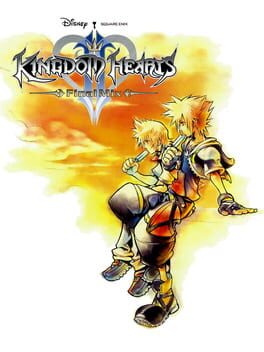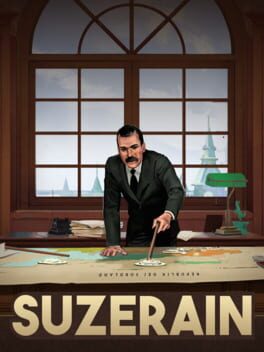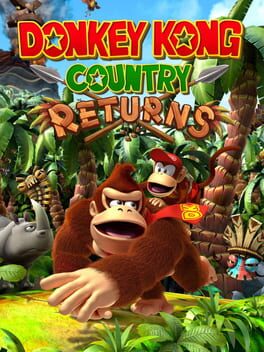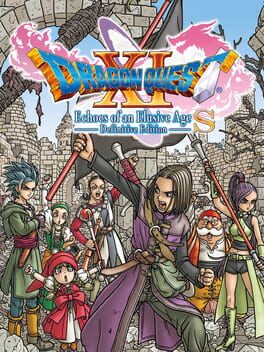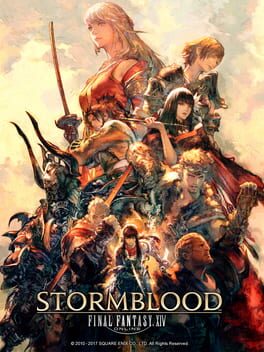GxBemis
Bio
Sweet dreams though the guns are booming
Sweet dreams though the guns are booming
Badges

Shreked
Found the secret ogre page

Well Written
Gained 10+ likes on a single review

Popular
Gained 15+ followers

Roadtrip
Voted for at least 3 features on the roadmap

Donor
Liked 50+ reviews / lists

Best Friends
Become mutual friends with at least 3 others

Organized
Created a list folder with 5+ lists

3 Years of Service
Being part of the Backloggd community for 3 years

Liked
Gained 10+ total review likes

GOTY '20
Participated in the 2020 Game of the Year Event

Noticed
Gained 3+ followers

N00b
Played 100+ games
Favorite Games
224
Total Games Played
000
Played in 2024
088
Games Backloggd
Recently Played See More
Recently Reviewed See More
Since its decades-old debut, Final Fantasy sought to distinguish itself from its contemporaries in the RPG scene with the ambition to make a game of strategy exciting. Rivals like Phantasy Star followed the example set by Dragon Quest, featuring first-person perspective combat and minimal battle animations/effects. They succeeded in conveying the necessary stats and information for the player to understand they are engaged in combat with an enemy, and execute a strategy to defeat it, but the battle itself was mostly explained to the player in colorless textboxes, with the enemy in question typically the center of attention, staring right into the camera. The game, then, made little attempt to belie itself; there wasn't truly a wizard eradicating a goblin, or two skilled swordsmen engaged in a deadly dual. There was really just the player, and how they respond to numbers, information, and the graphics. Having its roots in tabletop and text-based adventure games, RPGs could be said to not truly require visuals at all the way, for example, an action game does. Therefore, visuals were typically a secondary concern for the genre, instead focusing on refining the rules and balance of its rigid strategy. This is not to say encounters were not engaging, or could not be dynamic or layered, but could not compare to the excitement of seeing a more visually exciting and believable depiction of an encounter in something like an action game.
Developer Square, perhaps because of their history with relatively elaborately animated PC visual novels and console action games, chose to harness their artistic talents in creating the first Final Fantasy. Its biggest innovation to the genre was not mechanical (equipment/elemental weaknesses were in games like Wizardry, multiple party members were in DQ2), but experiential. It demonstrated the value of even minor cosmetics and furnishings to the campaign. Not only could you choose your party of characters from the start, but you can see them fight, get injured, and faint. You can see them use the spell you just bought, or see them swing the axe you just found. Final Fantasy owes much to other RPGs and adventure games, but what made it unique from the beginning was the commitment to make the player believe in its own fantasy, sparking their imagination with what they can see and time and time again.
As the hardware accelerated, the games attempted to depict more detail and move more believably. The SNES era injected real-time elements into the conventional, ludic turn-based format. The PS1 games rendered sprites in three dimensions to portray a sense of scale, while the PS2 fully realized proportional, detailed 3D worlds along with, in the case of XI and XII, fully real-time combat systems. Again, the insistence is not strictly on realism, but the excitement of witnessing a believable and well-defined fantasy world in action. Now with XVI, following the action-based direction from XIV and XV, there is a minimization of abstraction in the name of maximizing excitement and believability. This is all to say the technical action inspiration a la DMC makes sense for this series in this context to a degree, but the likely reason some feel so alienated by the approach regardless is more of a recent trend defined as a conflict between expressions of skill and strategy. I-XIII, despite the changes in hardware and central mechanics, are ultimately all games of strategy. Of the player they demand every little skill, or proficiency with control of the characters, and this was an intentional choice for the games to remain accessible yet complex; however, this choice would somewhat impede upon the developers' desire to make these games more exciting and visually spectacular. Even with ATB, an encounter can only be so exciting and believable when all of the characters are lined up in neat rows waiting for their chance to attack. XII in particular took great pains to retain the full suite of both party-based and command-based strategy the series was known for in a real-time, offline format, resulting in the genius concept of the gambit system to mitigate the demands of the strategy in battle by allowing the player to anticipate and automatically counteract much of them before the fight starts. XIV is, for all intents and purposes, the beginning of the series primarily demanding player skill and proficiency, particularly with the expansions, to properly execute rotations and avoid fatal damage. Strategy is however still important for coordination in party-based raids and trials, which some might consider the real meat of the gameplay. With XV acting as an ineffective compromise between demands of skill and strategy for the offline series, XVI minimized strategy more than any other game in the main series to date, to the extent that the quality or depth of player strategy no longer singularly determines victory but instead only determines how efficiently or quickly you win. Accessibility rings and easy balancing seem to dodge around the fact that unlike the rest of the series, if you aren't skilled enough with control of the game, you simply aren't going to beat it, no matter how carefully you build out your character or think out your strategy beforehand.
The original thesis of making strategy exciting feels somewhat diluted now, but for a game that refuses to be enslaved to its own legacy, it does not feel fair to judge it on that standard. XVI is different from series conventions, even moreso than normal, but different is not worse. When combat is the most consistently engaging its been in the entire series, it's hard to complain. Criticisms of repetitive gameplay against damage sponge opponents confused me; if anything, like VIIR I wish combat only lasted longer. There are so many abilities to experiment with and many ways to weave them into your basic combo. The satisfaction lies in the loop experimentation and discovery, supplemented by a steady stream of eikonic ability unlocks and generous re-speccing. Also, a serious commendation is in order for successfully engineering cinematic set-pieces with the eikon battles that don't sacrifice much mechanical depth or rob the player of too much control. After years of Uncharted and the like streamlining their control schemes to provide surface-level thrills, XVI proves these sequences can actually be fun to play. However, the balancing on the base difficulty threatens that fun, defeat is rare despite decently hard-hitting enemies because of overly generous means of recovery.
Others have commented on the lack of mini-games or additional ways to engage with the world outside of combat. In my mind, this choice hearkens back to the progression of the classic games I-V, but where those games provided a consistent sense of exploration of their fields and dungeons, XVI struggles to fill its runtime with overlong sections of talking, sidequesting, and other mechanically unengaging tasks. The bulk of this is centered on the hideaway, and considering the lack of interactive variety I think focusing so much on a hub like this was a mistake, mostly serving to prevent the game from naturally moving its story forward by exploring within the world itself. In the rest of the series, you're usually rewarded for pushing through a long, repetitive string of combat encounters with more story, but in XVI the opposite is true, the monotony is in progressing the story because you do the same sorts of things in the same place. I won't go much deeper into the story because if you made it this far you've indulged me plenty already, but I find after a familiar but well-balanced introduction it gradually loses steam about mid-way through, and the campaign structure cannot mainly be held responsible. It does not expound enough in the narrative to match the depth of its thematic ambitions, and while I like all the antagonists (sans Ultima) they do lack a certain depth or definition that would get me to see them as the human, tragic figures the game wants me to see them as. There are fascinating thematic elements, and some neat character arcs, but it is quite telling that a Final Fantasy ending left me feeling almost nothing at all as the credits rolled. I've warmed on it since, but it requires a lot of digging and extrapolation for what may be there but is not expressed clearly.
Claiming Final Fantasy has some kind of identity crisis with this installment misunderstands that this was ever a series interested in subtle innovations. I don't think Sakaguchi ever had the intention of making a sequel to his Final Fantasy. Though each numbered game bears the same name, they are truthfully standalone works, turns of a page unbeholden to what came before, except for the commitment to believe in their own fantasies. That boldness is refreshing in such a creatively stifling climate, and the fear of missteps or misdirection should not dissuade the fans from attempting to embrace each entry on their own terms and in good faith.
Developer Square, perhaps because of their history with relatively elaborately animated PC visual novels and console action games, chose to harness their artistic talents in creating the first Final Fantasy. Its biggest innovation to the genre was not mechanical (equipment/elemental weaknesses were in games like Wizardry, multiple party members were in DQ2), but experiential. It demonstrated the value of even minor cosmetics and furnishings to the campaign. Not only could you choose your party of characters from the start, but you can see them fight, get injured, and faint. You can see them use the spell you just bought, or see them swing the axe you just found. Final Fantasy owes much to other RPGs and adventure games, but what made it unique from the beginning was the commitment to make the player believe in its own fantasy, sparking their imagination with what they can see and time and time again.
As the hardware accelerated, the games attempted to depict more detail and move more believably. The SNES era injected real-time elements into the conventional, ludic turn-based format. The PS1 games rendered sprites in three dimensions to portray a sense of scale, while the PS2 fully realized proportional, detailed 3D worlds along with, in the case of XI and XII, fully real-time combat systems. Again, the insistence is not strictly on realism, but the excitement of witnessing a believable and well-defined fantasy world in action. Now with XVI, following the action-based direction from XIV and XV, there is a minimization of abstraction in the name of maximizing excitement and believability. This is all to say the technical action inspiration a la DMC makes sense for this series in this context to a degree, but the likely reason some feel so alienated by the approach regardless is more of a recent trend defined as a conflict between expressions of skill and strategy. I-XIII, despite the changes in hardware and central mechanics, are ultimately all games of strategy. Of the player they demand every little skill, or proficiency with control of the characters, and this was an intentional choice for the games to remain accessible yet complex; however, this choice would somewhat impede upon the developers' desire to make these games more exciting and visually spectacular. Even with ATB, an encounter can only be so exciting and believable when all of the characters are lined up in neat rows waiting for their chance to attack. XII in particular took great pains to retain the full suite of both party-based and command-based strategy the series was known for in a real-time, offline format, resulting in the genius concept of the gambit system to mitigate the demands of the strategy in battle by allowing the player to anticipate and automatically counteract much of them before the fight starts. XIV is, for all intents and purposes, the beginning of the series primarily demanding player skill and proficiency, particularly with the expansions, to properly execute rotations and avoid fatal damage. Strategy is however still important for coordination in party-based raids and trials, which some might consider the real meat of the gameplay. With XV acting as an ineffective compromise between demands of skill and strategy for the offline series, XVI minimized strategy more than any other game in the main series to date, to the extent that the quality or depth of player strategy no longer singularly determines victory but instead only determines how efficiently or quickly you win. Accessibility rings and easy balancing seem to dodge around the fact that unlike the rest of the series, if you aren't skilled enough with control of the game, you simply aren't going to beat it, no matter how carefully you build out your character or think out your strategy beforehand.
The original thesis of making strategy exciting feels somewhat diluted now, but for a game that refuses to be enslaved to its own legacy, it does not feel fair to judge it on that standard. XVI is different from series conventions, even moreso than normal, but different is not worse. When combat is the most consistently engaging its been in the entire series, it's hard to complain. Criticisms of repetitive gameplay against damage sponge opponents confused me; if anything, like VIIR I wish combat only lasted longer. There are so many abilities to experiment with and many ways to weave them into your basic combo. The satisfaction lies in the loop experimentation and discovery, supplemented by a steady stream of eikonic ability unlocks and generous re-speccing. Also, a serious commendation is in order for successfully engineering cinematic set-pieces with the eikon battles that don't sacrifice much mechanical depth or rob the player of too much control. After years of Uncharted and the like streamlining their control schemes to provide surface-level thrills, XVI proves these sequences can actually be fun to play. However, the balancing on the base difficulty threatens that fun, defeat is rare despite decently hard-hitting enemies because of overly generous means of recovery.
Others have commented on the lack of mini-games or additional ways to engage with the world outside of combat. In my mind, this choice hearkens back to the progression of the classic games I-V, but where those games provided a consistent sense of exploration of their fields and dungeons, XVI struggles to fill its runtime with overlong sections of talking, sidequesting, and other mechanically unengaging tasks. The bulk of this is centered on the hideaway, and considering the lack of interactive variety I think focusing so much on a hub like this was a mistake, mostly serving to prevent the game from naturally moving its story forward by exploring within the world itself. In the rest of the series, you're usually rewarded for pushing through a long, repetitive string of combat encounters with more story, but in XVI the opposite is true, the monotony is in progressing the story because you do the same sorts of things in the same place. I won't go much deeper into the story because if you made it this far you've indulged me plenty already, but I find after a familiar but well-balanced introduction it gradually loses steam about mid-way through, and the campaign structure cannot mainly be held responsible. It does not expound enough in the narrative to match the depth of its thematic ambitions, and while I like all the antagonists (sans Ultima) they do lack a certain depth or definition that would get me to see them as the human, tragic figures the game wants me to see them as. There are fascinating thematic elements, and some neat character arcs, but it is quite telling that a Final Fantasy ending left me feeling almost nothing at all as the credits rolled. I've warmed on it since, but it requires a lot of digging and extrapolation for what may be there but is not expressed clearly.
Claiming Final Fantasy has some kind of identity crisis with this installment misunderstands that this was ever a series interested in subtle innovations. I don't think Sakaguchi ever had the intention of making a sequel to his Final Fantasy. Though each numbered game bears the same name, they are truthfully standalone works, turns of a page unbeholden to what came before, except for the commitment to believe in their own fantasies. That boldness is refreshing in such a creatively stifling climate, and the fear of missteps or misdirection should not dissuade the fans from attempting to embrace each entry on their own terms and in good faith.
All the fun is had in Othard, where the game's jaunt most resembles Heavensward, fresh fantasy elements delivered at a steady pace. A vaguely-intimidating impirial threat is most of what Stormblood can muster for its liberation-themed plotlines in Ala Mhigo and Doma, and as such generally fails to substantially raise the stakes until the patch quests' allusions. By contrast, I felt the difficulty curve finally hit an apt degree of challenge for regular dungeons and trials, which themselves are the game's most inventive so far.
This review contains spoilers
I was rather hopeful when my constitutional reform barely pass the Court. I hadn't burned many bridges, trade deals and infrastructure promised an economic recovery, the intranational protests and violence calmed, and oversaw reforms for workers' rights, women's rights, and the education system. Sticking to the allies I could please with the resources I had combined with a general populist approach felt like the path to victory. My run ended with my country slipping back into recession, then a depression, Rumburg instantly pushing past my paltry military force and somewhat unfaithful allies, and imprisonment leading to the electric chair. I failed my country, my family, and my administration.
If you antagonize every dishonest bloodsucker, they'll conspire to crush you. Allyship is impossible without victimization. Most of all this is a narrative-driven game; success depends entirely on delicate subterfuge represented in the micro-choices in dialogue branches. Every choice has ramifications and it is not a kind world. Already thinking of a dictator run for revenge.
If you antagonize every dishonest bloodsucker, they'll conspire to crush you. Allyship is impossible without victimization. Most of all this is a narrative-driven game; success depends entirely on delicate subterfuge represented in the micro-choices in dialogue branches. Every choice has ramifications and it is not a kind world. Already thinking of a dictator run for revenge.
